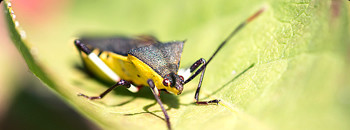Pending legislation in New York has demonstrated the importance of an educational platform of Debug the Myths. Confusion and misconceptions about pesticide and fertilizer product use remains common, as is indicated by a bill in the New York senate that would greatly hinder the ability to protect and maintain school grounds, playgrounds and other outdoor spaces from harmful pests.
New York state legislators may soon be voting on New York Senate Bill S.4983-C, sponsored by Senator Brian Foley, which would restrict the use of pesticides on school or daycare grounds, playgrounds, turf, or athletic fields. The legislation – called the “Child’s Safe Playing Fields Act” – would actually take away essential tools school grounds managers use to protect playing fields by managing pests and weeds that spread disease, cause significant damage, and place children’s health and well-being at risk. Pesticide products are used by schools, city maintenance departments, and athletic field groundskeepers to maintain safe and useable outdoor spaces in an effective and economic manner.
No pesticide product is merely “aesthetic” as pesticides help protect people and property from insects, weeds, and diseases that can cause significant damage and harm. For example:
-Common problems in schoolyards and on playgrounds are weeds such as clover that harbor stinging insects, particularly bees. Controlling these weeds is a preventative measure to control stinging insect populations, which pose potentially life-threatening risks to many children who are allergic to bee or wasp stings. Controlling these populations with pesticides would not be allowed until deemed necessary by the Department of Health.
-Lack of access to these products will make it much more difficult to consistently control weeds that pose trip hazards, irritate allergies, harbor stinging insects, and, in the case of poison ivy and poison oak, cause significant skin irritation. Overgrowth on playgrounds and in parks can harbor hidden dangers like broken glass and other litter that could hurt children at play.
-Uncontrolled weed growth creates costly cracks in sidewalks, patios and slabs. Enlisting manual labor to control weeds is time-consuming and expensive. Lack of chemical control options has made it difficult for municipalities to maintain public spaces and stretched city budgets due to the need for manual labor.
-Failure to control weeds like crabgrass and dandelions increase risk of injury on playgrounds and athletic fields as they cause tripping hazards, while thin, poorly kept turfgrass creates harder surfaces. Properly maintained turfgrass provide a softer, safer landing surface and better traction for young athletes and children at play.
Pesticides are rigorously tested for their potential human health and environmental impact before they can be registered and sold for use. Most product approvals take 8 to 10 years due to the diligence of the EPA testing program. In addition, the state of New York as an additional layer of regulation as products are also reviewed and regulated by the Department of Environmental Conservation.

